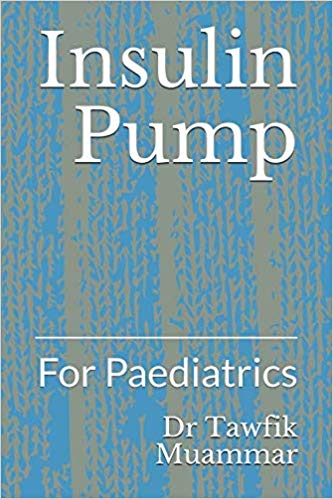
The aim of this book is to offer helpful information to healthcare professionals and parents to support children on insulin pump therapy. The book provides comprehensive information on a range of topics related to insulin pumps, including insulin action, diet, counting carbohydrates, pump use at school, exercise, use during illnesses, surgical operations and travelling with the pump.
This book is also designed to assist healthcare professionals, parents and children in the process of insulin pump initiation and to provide suggestions for the adjustment of basal and bolus insulin in all potential daily life situations. Reading this book with its clear information, tables and figures will help paediatric healthcare professionals, parents, carers and children get the most out of this valuable technology.
Every effort has been taken to ensure the information in this book is correct. However, it is the responsibility of the healthcare professionals to ensure they are happy with the information in the book and that the information given to children and parents is correct and in line with your local guidelines.
Genre: MEDICAL / Endocrinology & MetabolismRecently published, however, because of its importance high sale rate is expected.
1.3 Benefits of insulin pump therapy
When considering why and when pumps should be used instead of injections, it is important to understand the differences between injections and pumps.
Variations in basal insulin requirements over a 24 hour period are common. Pumps have the ability to deliver small amounts of insulin over a planned period of time. This can be pre-programmed without the need to insert a needle every time. This means the insulin action can match closely and conveniently a child’s insulin requirements.
The advantages and disadvantages of pumps over MDI are summarized in Table 1.1.
People often have reduced insulin requirements during sleep, with increasing requirement on waking. The insulin pump basal infusion rate can be programmed to fit that pattern in an individualized way. Similarly, basal rates can be reduced or discontinued with a pump at times of activity when insulin requirements are much lower. In contrast with MDI regimens, where rapid acting insulin can only be delivered once before the meal, insulin pumps allow for mealtime boluses to be delivered over a prolonged period of time (dual/extended bolus), enabling the insulin action to match the absorption of foods with low glycaemic index.
Pumps can also deliver very small volumes of insulin with finer control over changes in insulin delivery. Insulin pen devices and syringes can typically deliver insulin in increments of 0.5–1 unit, whereas pump increments are as low as 0.01–0.05 units. This is particularly useful for the insulin-sensitive and very young people with diabetes
| Language | Status |
|---|---|
|
Portuguese
|
Translation in progress.
Translated by Mariana Migoto
|